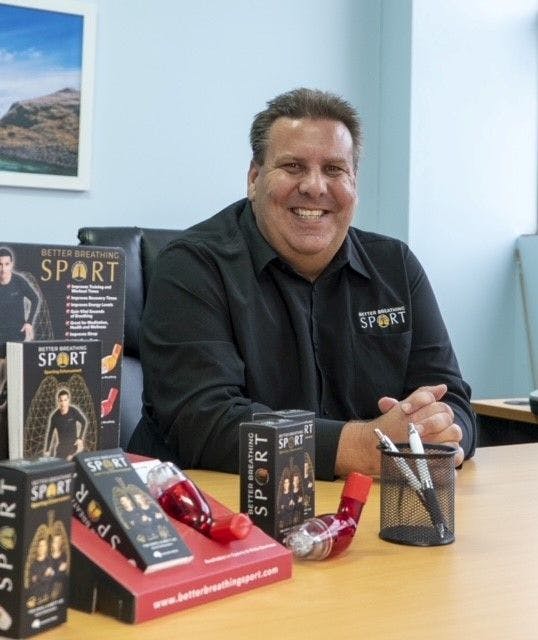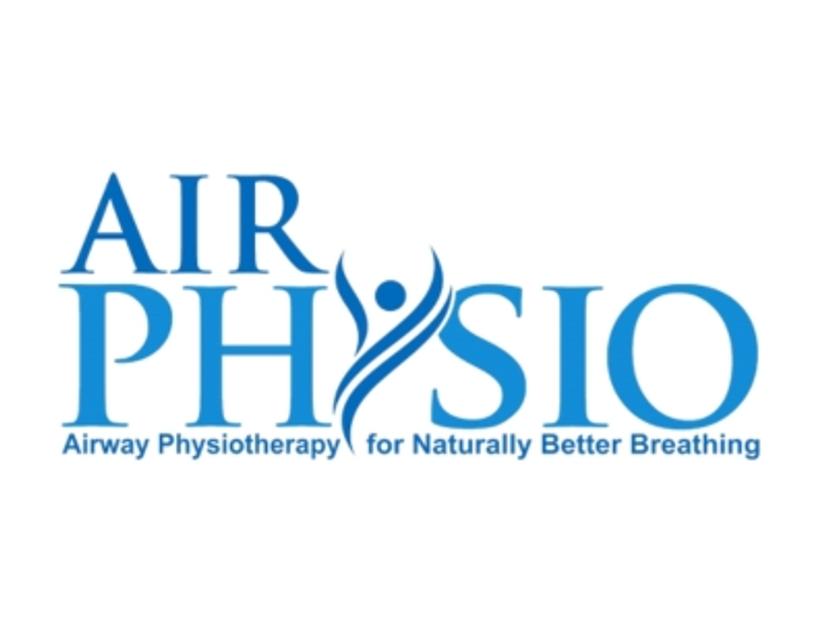Abstract
Breathing difficulties, persistent cough, and lung damage – the onset of the COVID-19 pandemic in 2020, amplified health challenges for a large section of the global population. This health challenge was especially aggravated for people who are already breathing polluted air conditions. Air pollution is a silent killer. The air pollution levels in India are among the highest in the world, posing a heavy threat to the country's health and economy. India’s entire population of 1.4 billion people are exposed to unhealthy levels of ambient PM 2.5 – the most harmful pollutant - emanating from multiple sources. Data suggests that more than 60 Indian cities have ‘poor’, ‘very poor’, or ‘severe’ air quality. This case study highlights AirPhysio's entry into the Indian market with their hand-held respiratory devices that helps people with limited lung capacity to clear their lungs and improve breathing.
“The trade agreement will help to open up India’s health market to Australian manufacturers. It reduces import tariffs from 42.5 percent to 7.5 percent. This will make it easier for distributors to sell high-quality medical devices in India.” – Paul O’Brien, CEO and Co-founder, AirPhysio
Introduction
AirPhysio is short for Airway Physiotherapy, the company started in 2015 with a dream of helping people with respiratory conditions.
“We understood that many people suffer from these conditions and natural therapy devices, although available, were relatively unknown and outdated.”
AirPhysio went about to develop a new and improved version of the current devices in the market. The team at AirPhysio met medical professionals, researched existing health conditions, and met people with respiratory conditions, to analyse their awareness of the current devices and consciousness of their lung health.
AirPhysio uses an all-natural Oscillating Positive Expiratory Pressure (OPEP) process to help clear and remove mucus from the lungs while helping to maintain or restore maximum lung capacity and improve breathing in a natural way. It can be used as a complementary treatment with medical or a natural means of helping to treat respiratory and severe conditions.
“In the past two years AirPhysio has had over 2,300 percent growth in FY2021 and 2,599 percent growth in FY2022. We currently employ around 60 people (approx. 50 full time employees in regional Australia), have employees in USA, India, and the Philippines. We have grown from exporting to two countries in January 2020 to over 106 countries currently and are working on around 20 more countries.”
The company’s physiotherapy device looks like an inhaler. It requires people to exert positive airway pressure as they exhale. This helps to remove mucus from lungs. It is a registered medical device in Australia and 15 other regions. AirPhysio is also becoming popular with athletes.

India Strategy
AirPhysio's India strategy was driven by its awareness of the existing massive market potential and the opportunities opened by the signing of the reasonably comprehensive interim trade deal. The Australia-India Economic Cooperation and Trade Agreement (AI-ECTA) promises to push bilateral trade from the current $27.5 billion to $45 billion in the next five years, and on to $130 billion by 2030. AI-ECTA entered into force on 29 December 2022. India's scale, demographics, and growing middle class offer a new long-term growth opportunity to Australian businesses. Australian manufacturers can use India as a cost-effective manufacturing base, and export from India to the world.
AirPhysio entered the India market in February 2022, and since then have partnered with a range of companies across diverse streams in various Indian States, to widen its understanding and maximise its impact. These partnerships include -
- Medsmart Pharmacy - Medsmart has been India's leading healthcare equipment distributor since August 2016, as distribution partner for many public and private sector hospitals, as a single vendor for 8500+ Stock Keeping Units (SKUs). With 13 distribution centres spread across the major cities in India, with a combined storage area of over 1 00K sq. ft., Medsmart handles hospital requirements, like consumables, disposables, equipment etc., as a single vendor
- Apollo Hospitals Group - Apollo Healthcare Group has a robust India presence since 1983, across the healthcare ecosystem. From routine wellness & preventive health care to innovative life-saving treatments and diagnostic services, Apollo Hospitals have touched more than 120 million lives from over 120 countries. It has over 10,000 beds, 400 clinics, 5,000 pharmacies and 24/7 digital channel, that offers one of the most comprehensive omnichannel.
- Guduri Wellness is the official AirPhysio wholesaler for Amazon and eCommerce. Ecommerce in India is expected to grow 21 percent to reach US$200 billion by 2026. Currently, with over 800 million smartphone users, by 2025 India is slated to have 350 million online buyers and digital spending is likely to reach US$550 billion (A$715 billion) making 35 percent of all retail sales.
- MGM College of Physiotherapy, part of the Mahatma Gandhi Mission Institute of Health Sciences in Mumbai for clinical trials for people who have survived ventilator conditions. Some of these conditions include post-tuberculosis treatment, acute respiratory distress syndrome (ARDS) and many other respiratory conditions with mucus dysfunction issues. These trials are designed to see how the AirPhysio device can potentially help expedite people's recovery from their respiratory condition and release them sooner from hospitals.
- U.S. Agency for International Development (USAID) and National Institute of Tuberculosis and respiratory diseases (NITRO) - for post tuberculosis (TB) research, NITRO is an apex institute in the country for prevention, control and treatment of Tuberculosis and Allied Diseases.
AirPhysio has built on an end-to-end engagement arrangement that provides a holistic India entry approach, through distribution, business partners, and fulfillment. Their India strategy has focused on both B2B and B2C marketing which complements each other and help them grow their brand and products quickly. The company has taken guidance from government trade organisations and external consultants to develop a thorough understanding of the Indian market, business etiquettes, cultural nuances, legal, accounting and taxation laws. This has facilitated their marketing and business framework to adopt and adapt to their partner needs, keeping in mind the logistics availability for exporting from Australia to India.
AirPhysio plans to manufacture in India in the near future, to grow its scale further once the demand for AirPhysio products is well established in the market. In the past two years the company has been awarded the NSW Regional Exporter of the Year, NSW Exporter of the Year, Australian Regional Exporter of the Year, India Australia Business & Community Alliance (IABCA) 2022 SME of the Year and were nominated seventh in the Deloitte Tech Fast50 this year.
"We also have Paresh Shah (ex-Austrade and Investment WA) as our President of South Asia to look after our interests on the ground in India, Nepal, Bangladesh and Sri Lanka."
"Every country is different, but they all have similarities in how things are performed and regulated. By finding these similarities, it allows us to grow and expand our brands and products on a larger and faster scale."
"We have learnt how cricket helps to unite people in ways which I had no idea could happen. Cricket superstar Brett Lee is our brand ambassador, he was part of our India launch with MedSmart and Apollo Group in October 2022. To see how everyone loved and adored him was truly inspiring, gave us a better understanding of why and what sport does for a nation."
As a private company, AirPhysio's core focus was on investigating, educating itself with correct research and planning by building partnerships and getting appropriate feedback from domestic experts, to put in place the best action plan.

Seeing The Future
Government of India (Gol) data suggests that the Indian medical devices industry has the potential to grow at 28 percent each year to reach $50 billion by 2030 from the current $11 billion. The sector has witnessed fast growth with a CAGR of 10-12 percent over the last decade. The key factors driving demand in India's healthcare sector are rising income, increased health awareness and an access to insurance. Gol's Ayushman Bharat, is the world's largest state-funded universal healthcare program with an annual budget of A$690 billion. This has created opportunities for Australian companies in the medtech sector, research and development (R&D) partnerships, training, and skills development.
Gol is also taking several steps to ensure the growth of a vibrant ecosystem of medical devices manufacturing in India that is led by Production Linked Incentive Schemes for medical devices with financial incentives worth US$456 million to boost domestic production, development of new Medical Devices Parks upcoming in Himachal Pradesh, Uttar Pradesh, Madhya Pradesh and Tamil Nadu to create a robust ecosystem for medical device manufacturing and the release of the National Medical Devices Policy to enable strong collaborations for boosting the medical devices ecosystem and the National R&D Policy to foster interdisciplinary collaborations to develop translational skills.

Planning Ahead
AirPhysio’s India journey offers several lessons –
- Ensure regulatory compliance and approvals from relevant authorities. Obtaining necessary approvals can be time-consuming, so plan ahead and work closely with local regulatory consultants
- Collaborate with local distributors, healthcare institutions, and experts. Partnering with established entities can help you navigate the market's nuances, leverage existing networks, and gain insights into customer preferences and needs
- Conduct thorough market research to understand the specific demands and challenges of the Indian healthcare system. Adapt your products and strategies based on local requirements, pricing expectations, and cultural considerations
- Focus on offering value-driven solutions that cater to the needs of diverse customer segments. Balance high-quality products with affordable pricing
- Tailor your marketing, packaging, and communication strategies to resonate with the Indian population. Cultural sensitivity and localisation can significantly impact your brand's perception and acceptance
- India's healthcare infrastructure varies across regions. Consider the logistics and distribution challenges when planning your market entry. Be prepared to reach rural areas where healthcare accessibility is limited
- Engage with healthcare practitioners, clinicians, and hospitals to understand their requirements and gain their trust. Building relationships within the healthcare ecosystem can be pivotal to your success
- India's healthcare sector is increasingly adopting technology solutions. Leverage digital platforms for marketing, distribution, and even telemedicine integration if relevant to your products
- Provide training to healthcare professionals on how to use your products effectively. Education initiatives can help create a strong user base and enhance the reputation of your brand
- Establish a robust after-sales support system. Quick and efficient technical assistance, maintenance, and troubleshooting services can enhance customer satisfaction
- Safeguard your intellectual property rights
- Ensure your products meet international quality standards
- Study your competitors and their strategies in the Indian market. Identify gaps and opportunities that you can leverage to differentiate your offerings
- Think long-term. Plan for scalability and sustainability by considering factors such as supply chain stability, local manufacturing options, and environmental considerations
- Be patient, adaptable, and willing to adjust your strategies based on feedback and changing market dynamics.
Entering the Indian medtech market requires a comprehensive approach that addresses regulatory, cultural, and economic aspects. By understanding and navigating these factors, your medtech company can position itself for success in this dynamic market.

